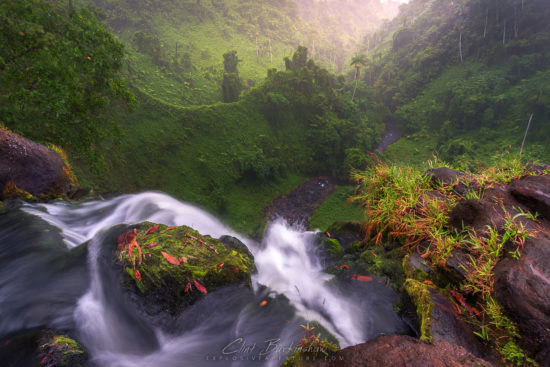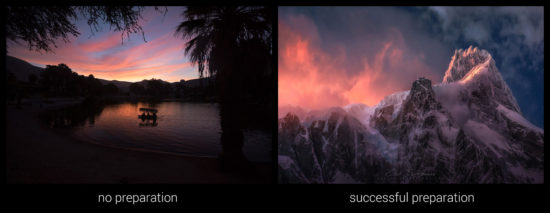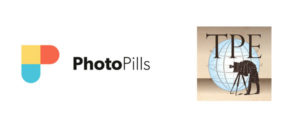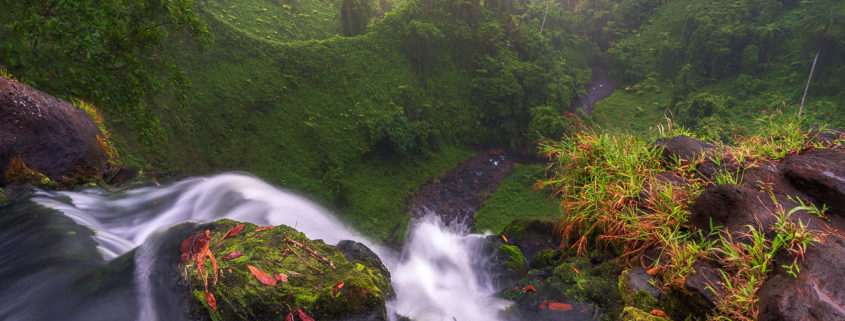Why Fieldwork is Important
It is true that stunning photographs can be taken on a whim when presented with a beautiful scene in front of you. As a travel photographer, a portion of my landscape work is actually done this way (due to local limitations and unforeseen environments). The challenge then becomes how to think on your feet and deal with the scene with which you’ve been presented. However, where possible (and when situation permits), I conduct as much research and fieldwork as possible to prepare for an upcoming shoot. This always results in better photographs and naturally, greater satisfaction.

Knowing I would visit this waterfall, I researched first whether I could get close to the falls, knowing there was a valley extending away into the distance.
Why It’s Important
Fieldwork is important for a number reasons. But first, let’s consider this…
Upon visiting your photographic destination (a lovely valley with a backdrop of snowy peaks), you’re presented with a beautiful vista that’s glowing with a surrounding golden light. You immediately pull out your camera and begin hunting for the best composition in the nearby vicinity. You take a few snaps that you are happy with and after a short while, that magic light disappears. After finishing your shoot, you walk on. Within minutes, you round a corner to a beautiful cascading stream flowing down from the peaks towering above. Wow! How amazing would that have looked if you could it as a foreground instead of the weird-shaped rocks you just used (not that there’s anything wrong with weird-shaped rocks). An obvious lesson becomes suddenly clear. If you had only done some preparation and fieldwork prior to your photo shoot, your good photograph would of been GREAT!
Also, perhaps those enchanting shots of cascading streams below the snowy peaks that you saw on the Internet aren’t at all what you find when you’re actually there. You realize only after you arrive that those snowy peaks aren’t snowy in the summer and the cascading streams are now all dried up. You’ve come in the wrong season to what you originally wanted.
Taking the time to research your future photography sessions gives you a huge advantage for improving your composition and goes a long way towards putting you in the right spot at the right time.

The image on the left is an example of failing to prepare. I was nowhere near where I wanted to be when the light hit. The image on the right is what happens when you put effort into field work. You are on site, ready to go, prior to the arrival of that golden light.
How to Prepare
There are many different ways in which you can prepare for an upcoming shoot. Below are the most common ways photographers go about researching their environment.
Internet research and Google images
It’s pretty simple. Google your location prior to shooting. This gives you a big heads-up in terms of what you’ll be walking into. Try using different search times by adding in key words such as landscape or photography. Also research what time of year is best to visit the location. It’s very likely others have been there plenty of times before and produced some descent images. Browsing the myriad of photographs and blog entries gives you a first-hand glance of what’s been done and what hasn’t been done.
PhotoPills and/or TPE-type apps
Brilliant applications that can be downloaded directly to your phone. With these, you can browse satellite/terrain imagery and plan future shoots. These apps give you specific sunset/sunrise (as well as moonset/moonrise) times and locations/direction of any date you pick. Have a composition planned out, but need the Milky Way or sun to rise/set in the right location? These apps are perfect for that. Some even give you augmented reality and allow you to visualize onsite where the sun will set or galaxy will rise through your phones camera.

Google Maps
This one is a bit obvious but often underused. Remember that situation described above? Well, a simple glance at Google Maps can fix that. Browse the terrain and satellite imagery of your upcoming outdoor location to find potential compositions. Find streams, waterfalls, coastal formations, specific landmarks, and more. It also brings up images that have been geo-tagged from that location to help you further visualize the landscape.
Explore on foot first
Last but definitely not least, arrive on the scene in advance to scout the area by foot. Landscape photographers mostly shoot during the golden hour so arrive during the middle of the day when the light isn’t desirable and explore the area. Doing this allows you to take your time finding interesting compositions so that, when the light is just right, you can go directly there and begin photographing (without running around, wasting that amazing light trying to find the composition).

Careful preparation days in advance on Google Maps and TPE allowed me to find this composition of Torres del Paine. Though the light didn’t quite cooperate, it still ended up a great shot thanks to prior fieldwork.
I hope these simple tips help you out when it comes to planning your future photography session. Have some other favourites that you want to add? I’d love to hear them in the comment section below.



